'I had a love-hate relationship with my 'mini Monet' moniker'
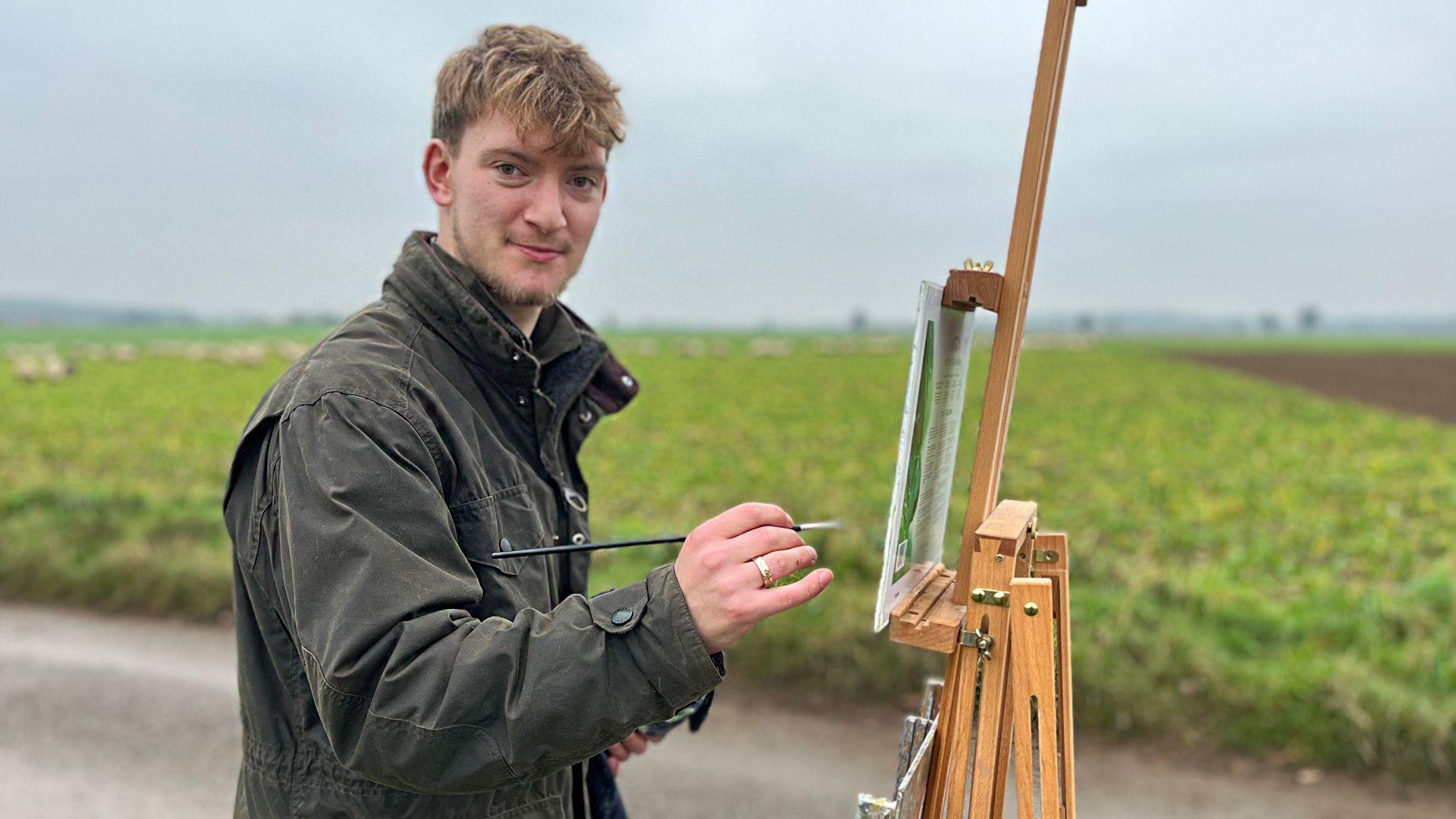
Kieron Williamson is no longer a "mini Monet", but a fully-grown adult artist
- Published
"The times were crazy back then. I'm glad it's sort of quietened down a bit and, you know, I'm just an artist now."
For Kieron Williamson, it's hard to comprehend the scale of what went on 15 years ago – and what he has achieved since.
In 2010, the world's media descended on the north Norfolk countryside to witness the hammer go down on landscape works by Kieron, one of the UK's most promising painters – aged just seven.
By the age of nine, he was hosting his first career gallery and was on his way to becoming a millionaire.
Now, aged 22, and towering in height above his dad, his "mini Monet" moniker is consigned to history, in a physical sense. However, it will forever remain part of his identity as he takes his paintbrush and easel into young adulthood.
"I had sort of a love-hate relationship with it [mini Monet] – maybe because I heard it so much," says Kieron, in his countryside studio close to where he grew up, and in the surroundings he remains inspired by.
"But I mean, what an honour to have my name up there with Monet's, you know?"
Williamson's love affair with painting began when he was first able to pick up a brush, on his family holidays in Cornwall.
His ability astonished his parents Michelle and Keith, and soon after he went on to take art classes alongside adult peers.
By 2010, his work was of such a standard that he was being exhibited in his former hometown of Holt, where his family lived in an unassuming flat beside a petrol station.
In a matter of weeks, word of his extraordinary ability had spread across the world – leading to his works selling for £150,000 in just minutes.
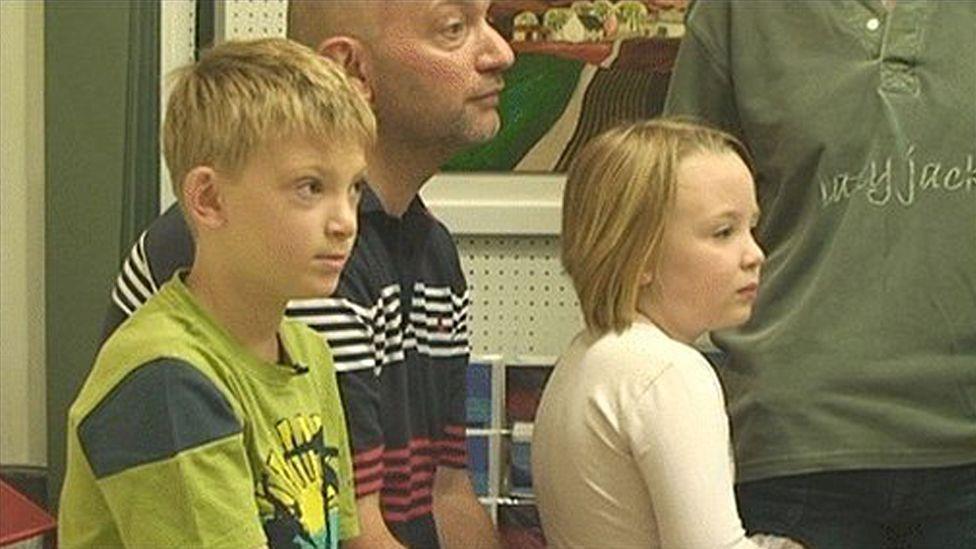
Seven-year-old Kieron Williamson, with his father Keith and younger sister Billie-Jo, sit quietly in the corner of a Norfolk gallery while his works are sold around the world
"From that moment it all went sort of crazy, we haven't looked back," says Kieron.
"I do still remember it. I remember the feeling – it was pretty amazing. I suppose you can compare it to, like, your team scoring a goal. It's that kind of feeling."
Such global attention at such a young age was, at times, "very intense" and "overwhelming", Kieron says.
"It was crazy. I don't think I've fully understood the extent of how crazy it was.
"I felt every week we were up at London filming and there was film crews - it felt just like every week, from all parts of the world.
"It was mad, but it was also brilliant at the same time."
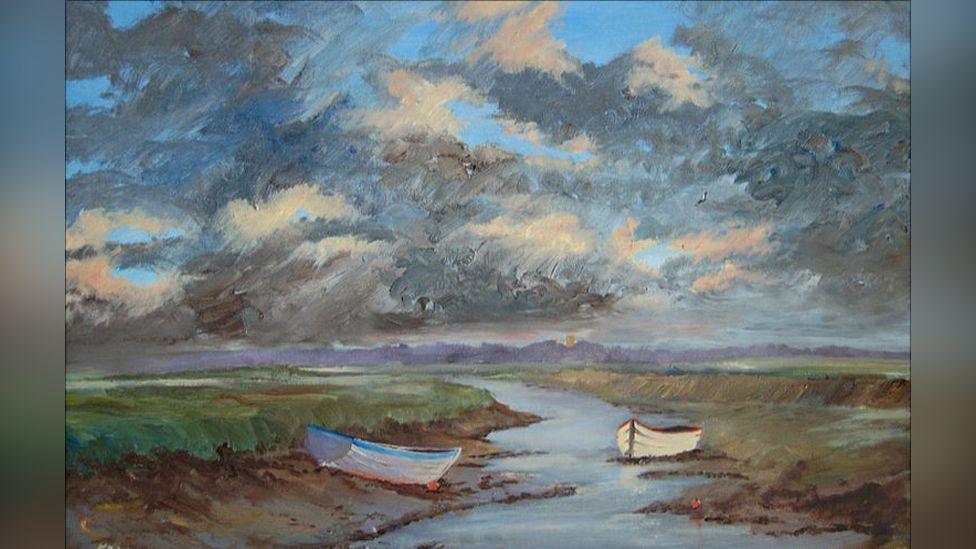
Sunrise at Morston was one of the pieces auctioned by Kieron, aged seven
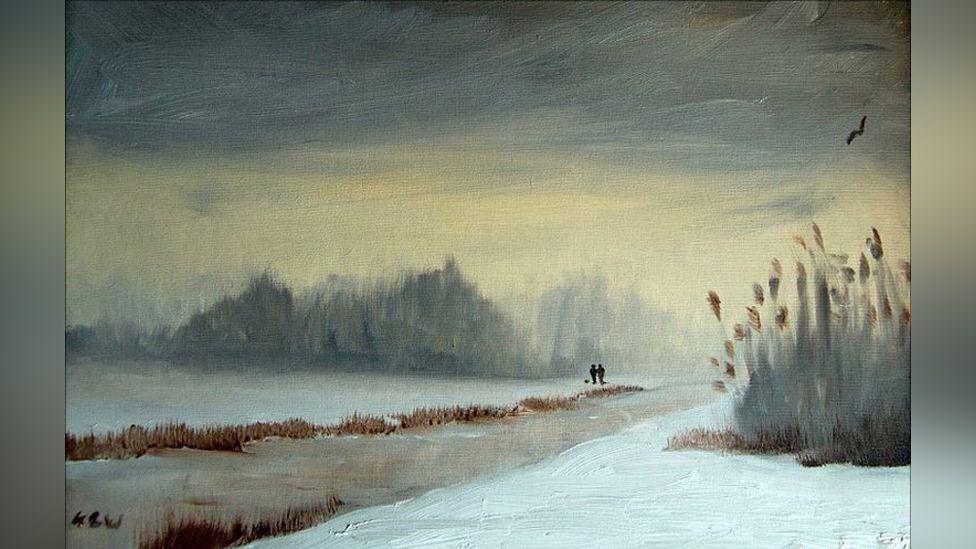
Winter Lakeside was also put under the hammer in the same exhibition
Far from seeing his experiences as a boy as a burden, Kieron says he will "always feel grateful that it actually happened".
"To be fair, I never really think about it, you know? It's just something that happened and it's shaped my life, but I don't see myself as anybody famous.
"It's given me such great opportunities and the people we've met along the way has been amazing.
"The times were crazy back then. I'm glad it's sort of quietened down a bit and, you know, I'm just an artist now.
"I don't know how my parents done it but they steered such a steady course. They done such a good job."
'I'm leaving my mark'
Throughout his teens, Kieron was home-schooled and was able to hone his craft.
He still takes inspiration from the landscapes where he lives, with fellow East Anglian painters Edward Seago and Alfred Munnings remaining strong influences.
But in recent years, he has ventured into portraiture and equine work too, with horse-riding becoming a passion outside of the studio.
"I go horse-riding twice a week – and that's a nice release. Just a few hours to think about something completely different," he says.
"But then again, it's also understanding of the horses [that has] helped my painting as well. I can't escape from it.
"Before bed I'm looking at art. When I wake up I'm looking at art. So I don't ever switch off. But I love it, so why would I want to?"
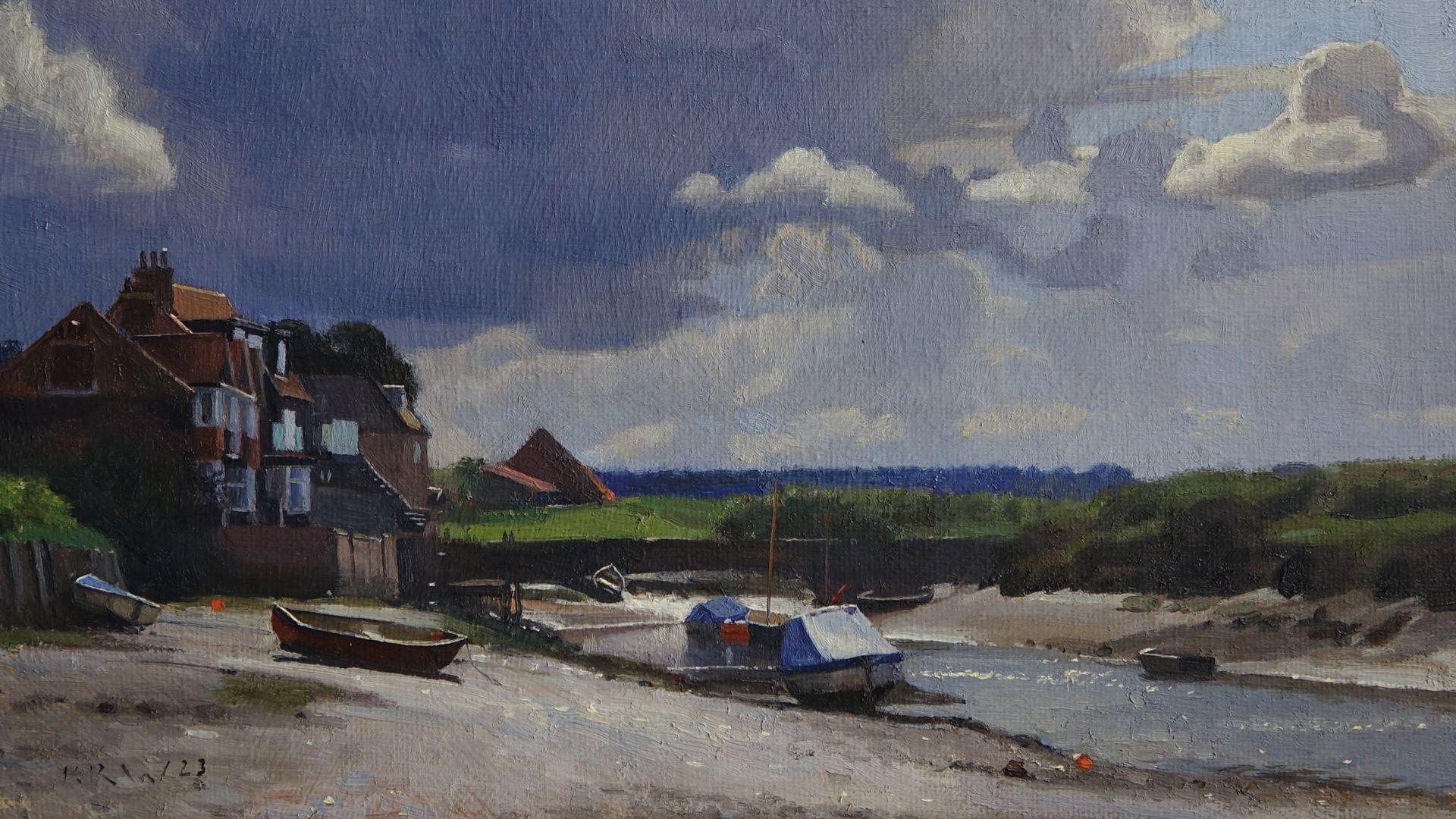
Adult works by Williamson show his maturity as a landscape artist, such as Before the Heavens Opened (cropped)
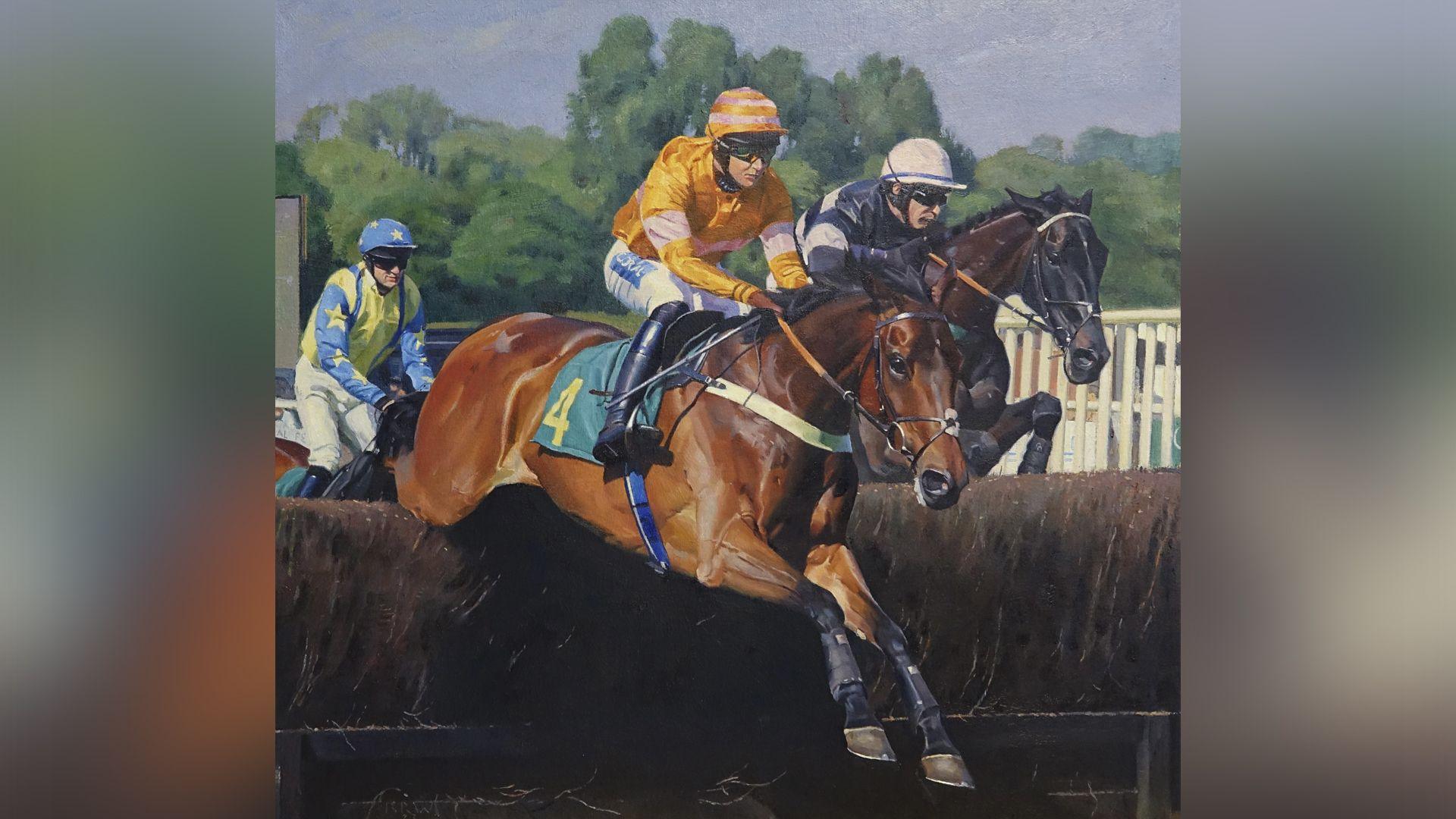
Jumping Well is inspired by Williamson's love of horse-riding
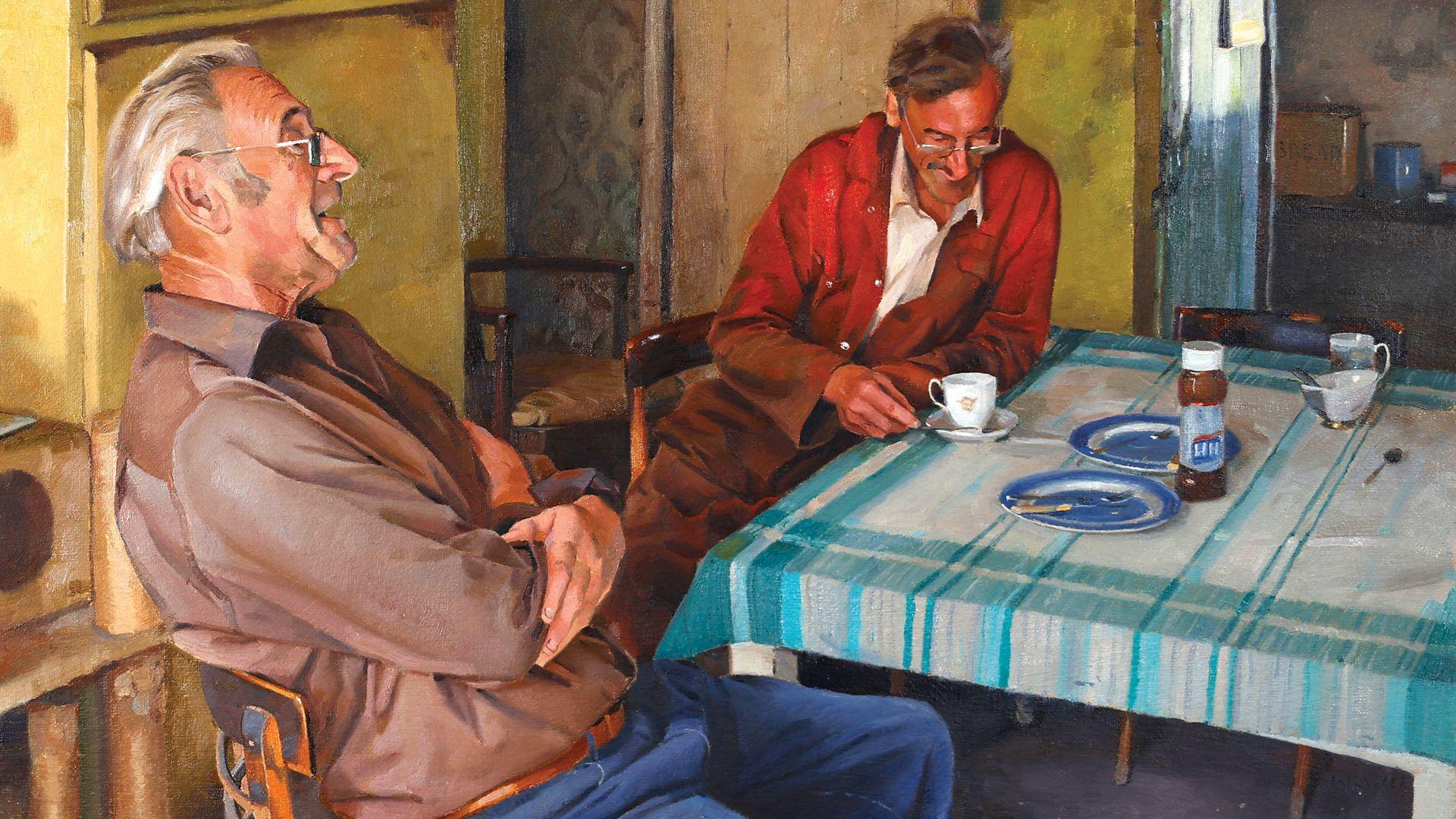
Time to Crack On (cropped) shows another side to rural life, with two men mulling over a cup of tea
Despite this lack of "escape", he still gets joy from being an artist.
"It's hard to describe. I mean, I walked in my studio this morning and I was just like looking at my paintings – there's a feeling. I think it's pride, because I'm putting on to canvas and capturing something that's going to last – out-do me, out see me, and it's going to be possibly on somebody's wall for generations, you know? I'm sort of leaving my mark."
He is three-quarters of the way through his next body of work, which will be exhibited at the same gallery in Holt as all those years ago.
His works nowadays reach the high tens of thousands of pounds – with some of his sought-after early pieces starting to drip-feed back on to the market too.
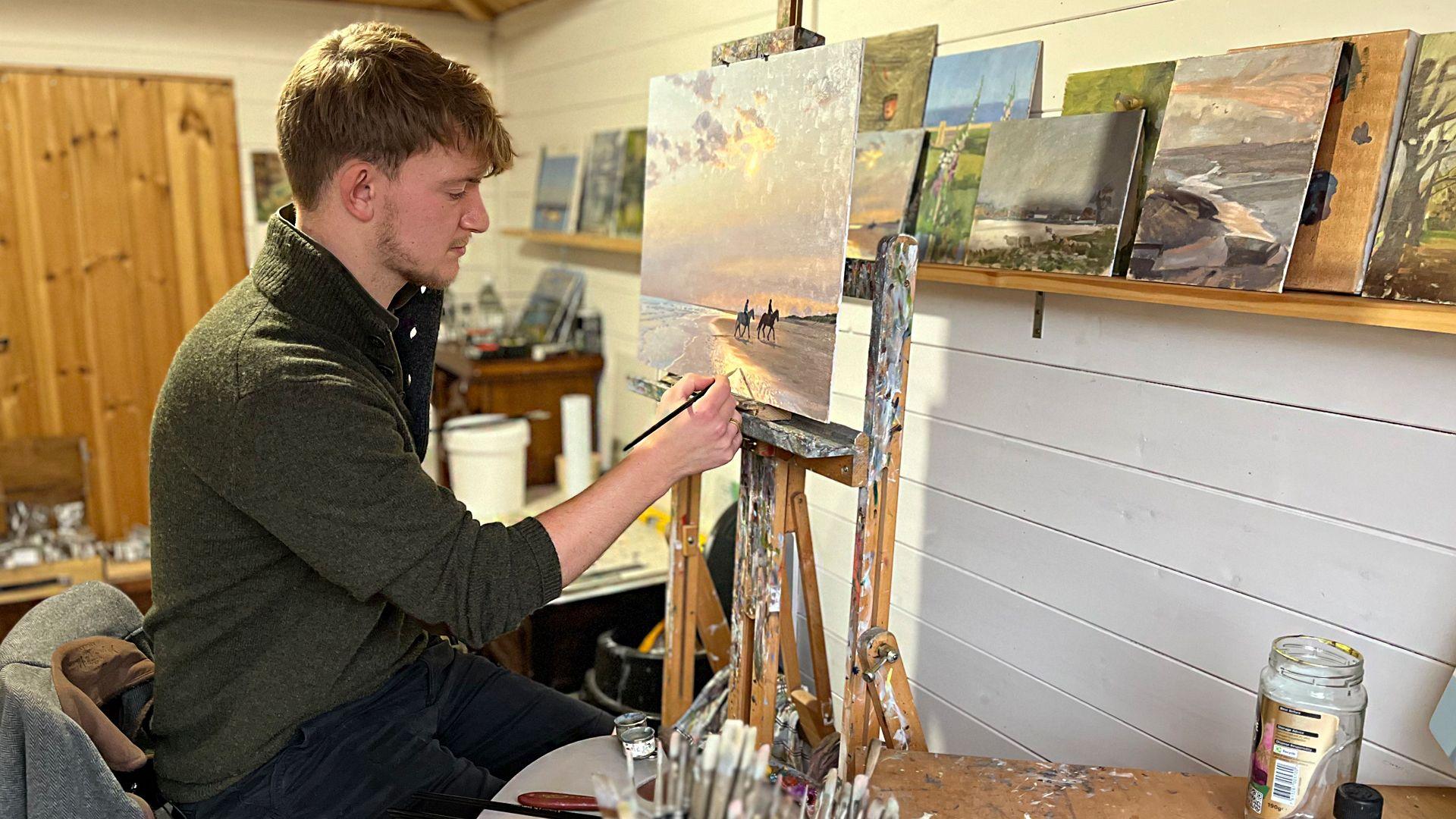
Kieron Williamson is preparing for his next exhibition in the summer
Adrian Hill, the managing director of Adrian Hill Fine Art gallery in Holt, says Kieron's enduring appeal is simple to understand.
"The older he's become, he's taken the public with him, which is a very important thing to do," he says.
"He's stayed very true to himself and as a result of that, he's producing some absolutely superb paintings.
"When you look at it in art history – 200, 300 years from now and people look back and say, who was the most successful child painter in the 21st Century? The answer's undoubtedly going to be Kieron Williamson."
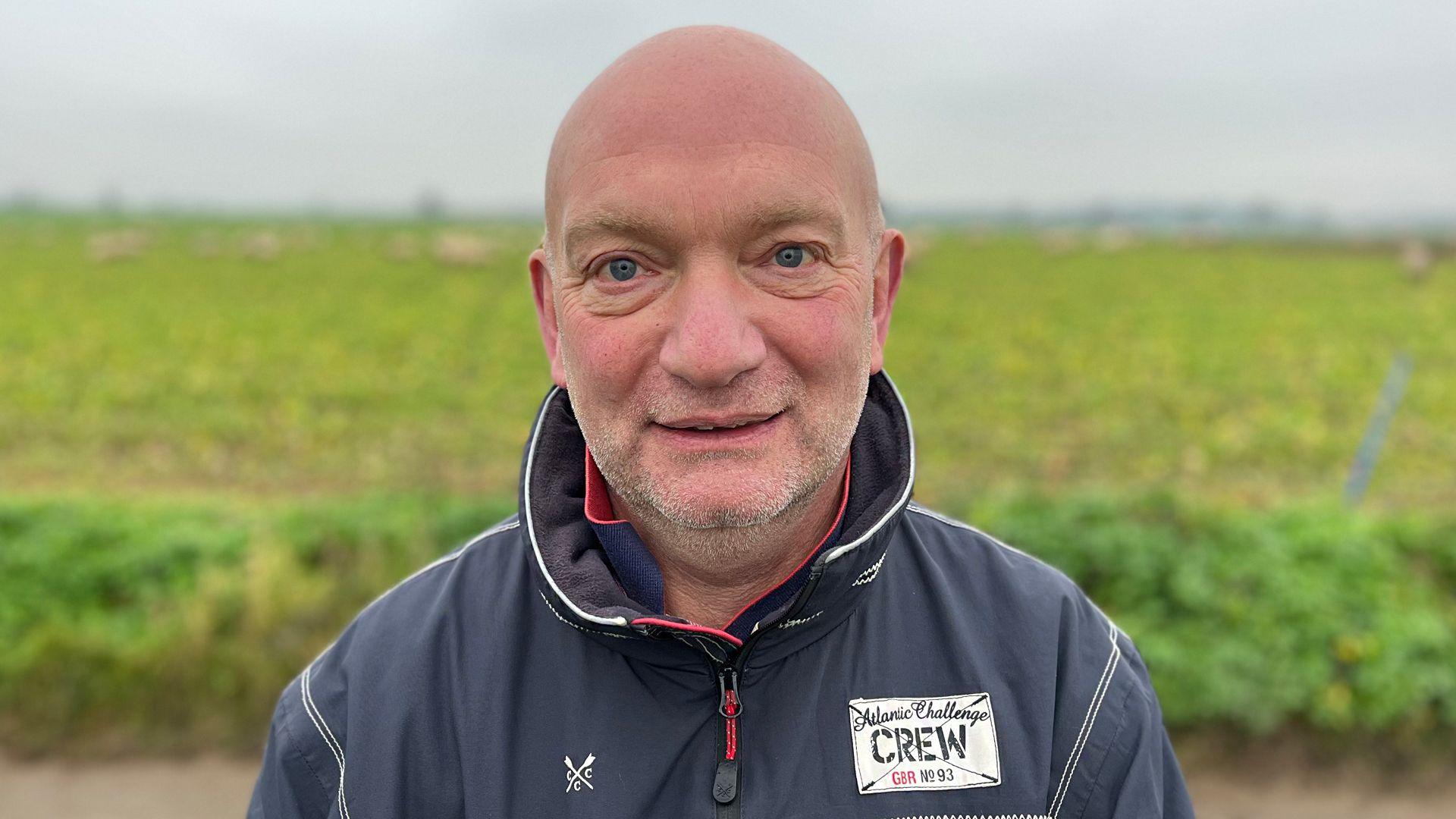
Keith Williamson says he is "just really proud" of his son
For Kieron's father Keith, an art dealer who lives with his son in Norfolk, he says "it's been one heck of a journey".
"I think we coped all right with it. It's changed our lives a lot and we just muddled along, really.
"No-one really knew this would still be going and nor did we, we just stayed with it."
"He'll never give up art. He gets up in the morning and that's all he ever talks about until the time he goes to bed - apart from Leeds [United]," he jokes.
"I did want him to be a footballer. I wanted him to be the next Leeds captain, but you can't have everything."
Get in touch
Do you have a story suggestion for Norfolk?
Follow Norfolk news on BBC Sounds, Facebook, external, Instagram, external and X, external.
- Published20 May 2019
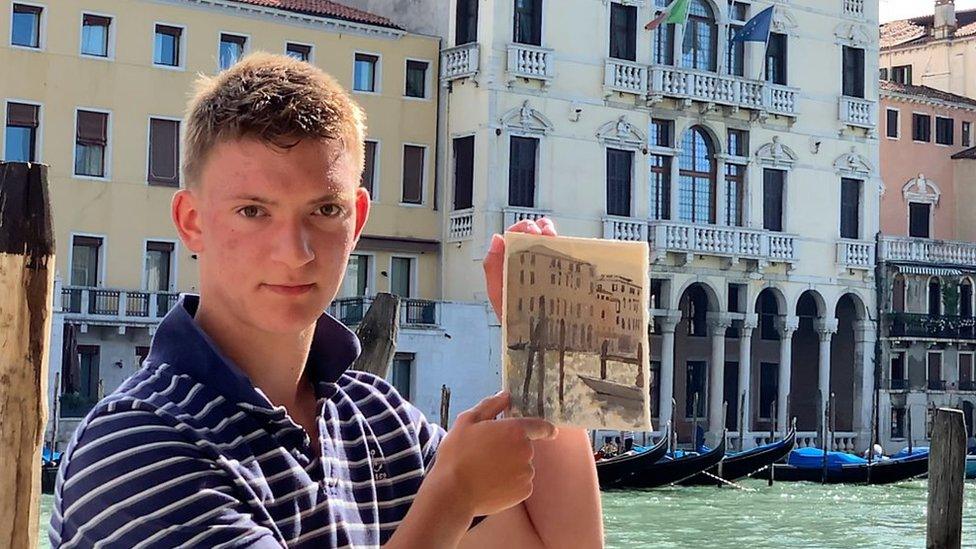
- Published9 July 2017
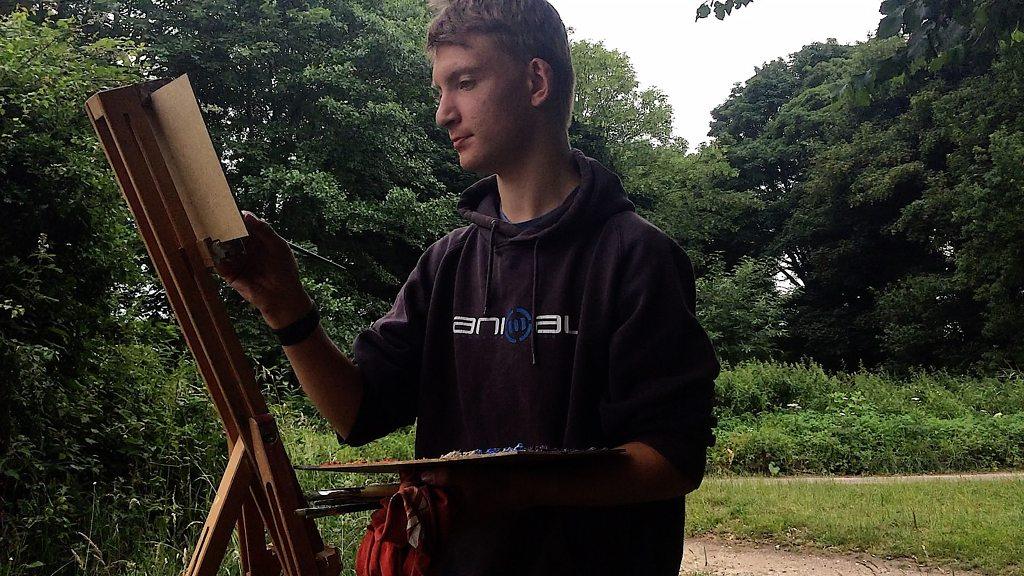
- Published30 July 2010
- Published20 July 2012